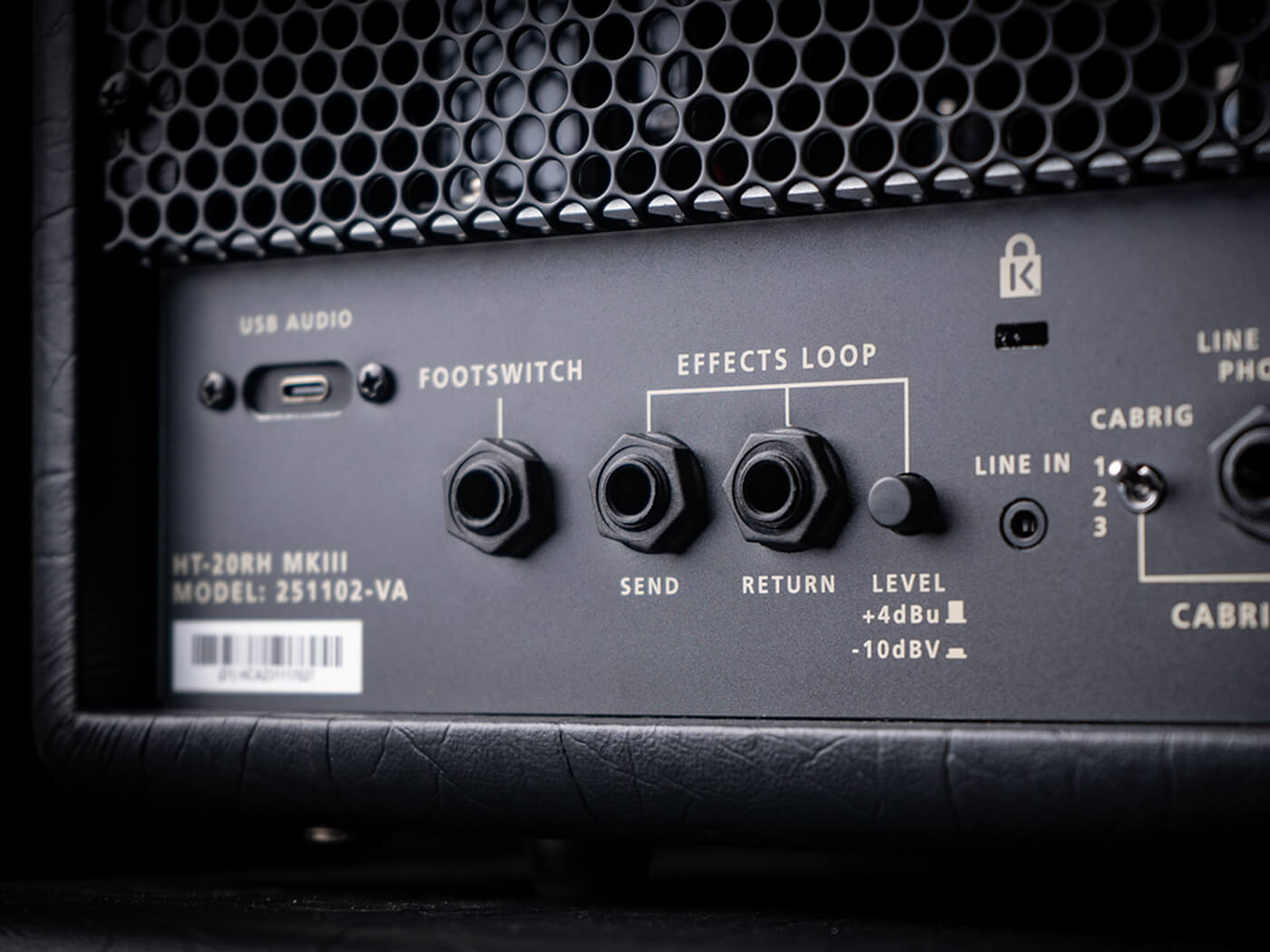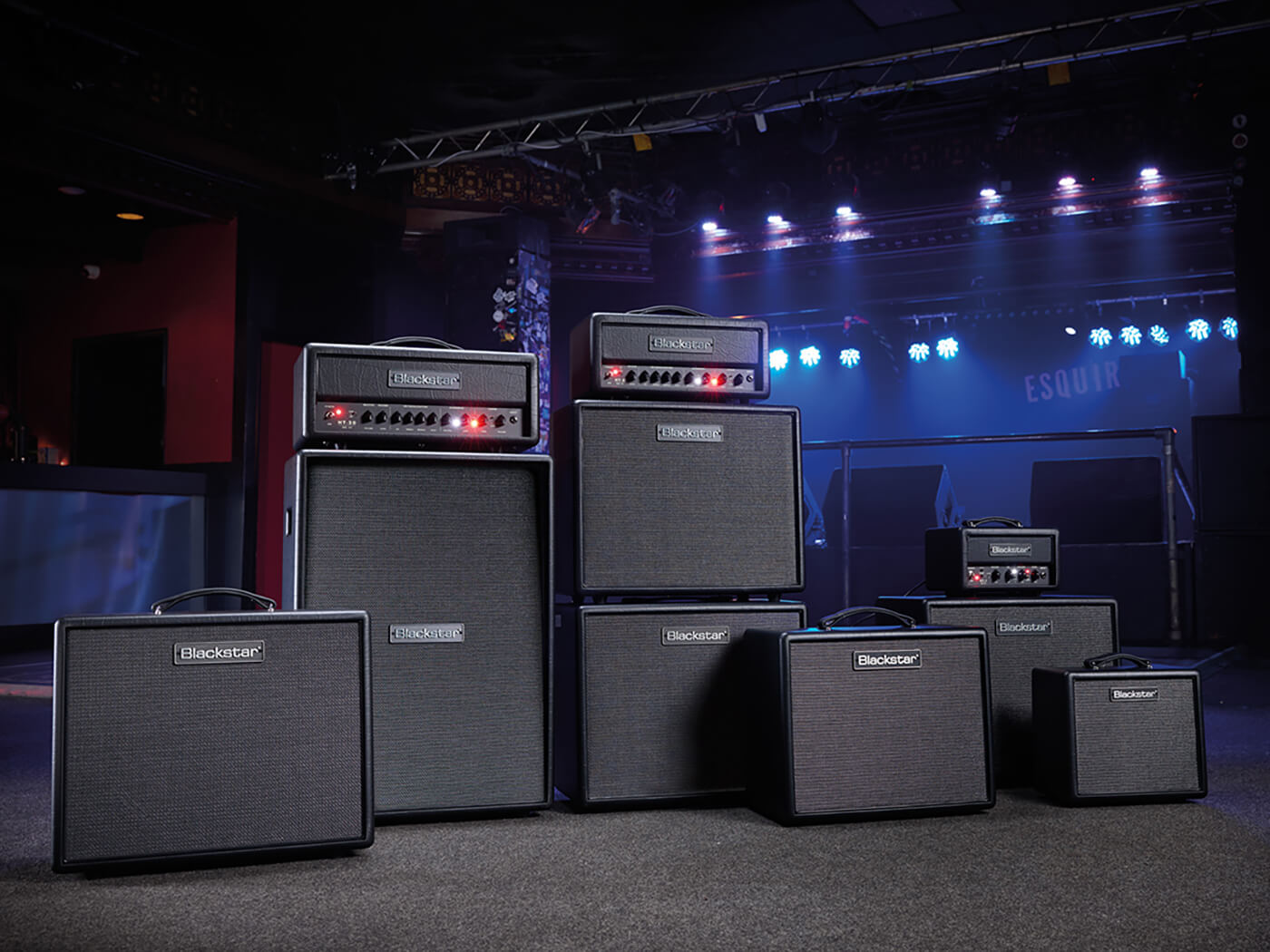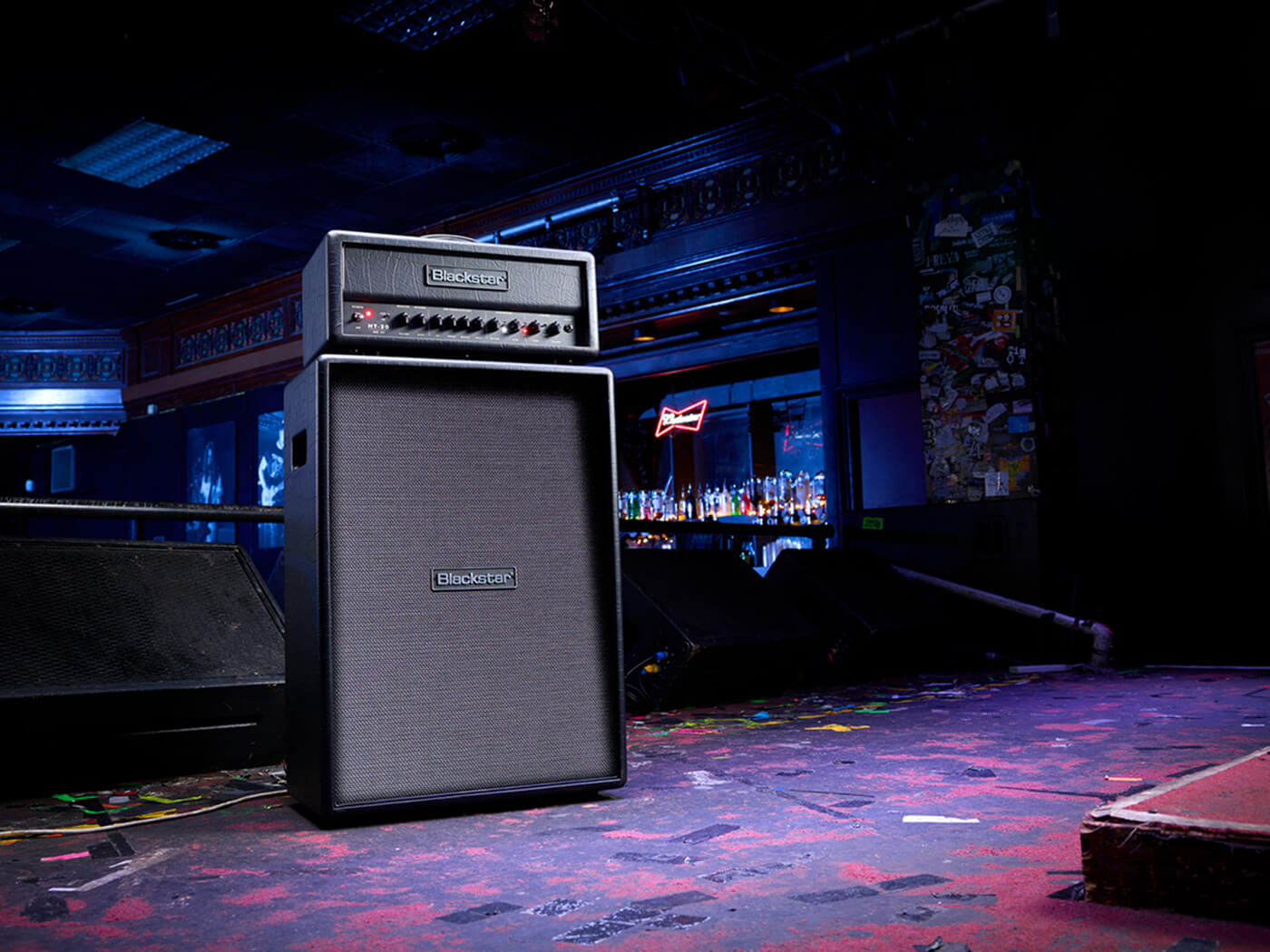Related Tags
Blackstar HT-20RH MK III review: the gigging amp staple becomes a versatile recording tool
The modern overhaul to Blackstar’s flagship tube head doesn’t change much about the fundamental (and popular recipe), but there are some impressive updates to its direct capabilities

Blackstar HT-20RH MK III
Review Overview
Our rating
8
Our verdict
£749/$749, blackstaramps.com
The Blackstar tagline is ‘The Sound In Your Head’. Not the design team’s heads: your head. Its flagship guitar amps aren’t based around any one character of sound, or indeed one use case. Instead, they offer a bevy of different voicings as well as that whole Infinite Shape Feature thing. And as an added bonus there’s often a tech innovation or two to boot – it’s done away with the power transformer, it goes on the floor, and so on.
The flipside of this is that it’s hard to really say what ‘the Blackstar sound’ is – or if it even exists at all. Because when you’re buying a Blackstar amp you’re not necessarily going looking for a single sound, you’re looking for many. The whole ethos of Blackstar’s one-for-all approach is designed for those players who want to have the sonic flexibility of a suite of plugins or a garage full of amps without the expense or hassle of either of the above.
None of Blackstar’s amps exemplify this approach like the HT range. Spanning 1-watt mini heads to 100-watt beasts, they offer a number of differently-voiced clean and drive sounds, the aforementioned ISF control and a wide range of direct options. Last year, the Venue amps – the most powerful in the range – were updated to MK III, with better aesthetics, USB-C ports and a few other tweaks. And now, the rest of the HT amps have joined them in MK III land too.
Today I’m looking at the 20-watt head, the HT-20RH, as well as the latest update to the HT range’s vertical 2×12 cab. Being the most powerful head before you get to the 50- and 100-watt Club and Stage amps, the HT-20RH is gunning for a spot on your home studio’s desk as much as it is in your backline. How well does it do in both?

What’s new for MK III of the HT series?
The MK II amps had pretty good direct capabilities, particularly for tube amps released in 2017. But the MK III expands upon them in a very 2024 way. There’s a USB-C port on the back for direct digital recording, and for deep-editing, alongside a quarter-inch headphone/line-out port, a balanced XLR out, and an 1/8-inch line-in.
For MK III, direct sounds are now being provided by CabRig, Blackstar’s bespoke cabinet sim software, and a very welcome addition. Not only has CabRig proved itself to sound pretty good across the board, the accompanying app is mostly headache-free and works on a desktop rather than your smartphone.
As for other upgrades, well, the internals of the actual tube amp portion of things haven’t had any changes big enough for Blackstar to make a fuss about. The distribution of channels and voices is overall unchanged: there’s a clean channel with a US and British voice, and an overdrive channel with a classic and modern voice, and the ISF control.
There is a big difference in the aesthetics: the whole amp is now covered in black tolex, with a sleeker, darker logo panel, a matte-black control panel, black knobs and high-quality toggle switches rather than push-buttons. It’s somewhere between the classy looks of the Silverline series and the old HT range, and it makes the whole thing look a lot more boutique and significantly prettier than the MK II amps.

What does the HT-20RH sound like?
The sheer range of sounds on offer from the various channels and tone-shaping controls unavoidably means that the dialling-in process takes some consideration. The EQ controls have pretty wide sweeps, and behave slightly differently across the voices, and so the HT-20RH has a bit of a learning curve: the time between taking the amp out of the box to getting a usable guitar sound is a little longer than average.
What does “usable guitar sound” mean here? Well, starting with the clean channel’s US voice, it means rounded, clear and bassy. Even with this 20-watt head, there’s volume and clean headroom in abundance. The US voicing is a clean channel in the cleanest sense, doing the least tonal colouring of all of the amp’s modes. If your pedalboard is the core of your sound, this will likely be where you find it best represented.
Switching to the British-inspired voice, things get decidedly Voxier. There’s a bit more midrange and a bit less headroom – the “edge of breakup” appears much earlier on the sweep of the channel volume. Unsurprisingly, this slightly grittier voicing is a great pairing with a Rangemaster-style treble booster, and with a Tone Bender-style fuzz.
The classic voice of the overdrive channel is instant rock, summoning some Marshally crunch right off the bat. Across most of the gain range it’s pretty open and uncompressed rather than highly saturated – more AC/DC than Metallica, if you like. Strangely, shifting the ISF knob doesn’t really do a huge amount here. While the midrange does move around a little bit, it’s not quite the wide swoosh across the Atlantic it can occasionally be elsewhere.
Onto the modern voice. It’s perfectly capable of getting a good hard-rock or metal sound on its own, but also provides fertile ground for the good ol’ modern metal formula: a mid-hump low-cut drive in front, and it’s off to chug city. Pushing a bit more volume into it, infinite-sustain metal leads are more than achievable. I also find the ISF control much more useful on the modern voice, with a middle-ish position allowing for just the right amount of hairiness to remain in the midrange while still keeping the low end under control.
It’s worth noting that across the board, things feel very polished. The effects loop is pristine, and the general noise floor is incredibly low. The slightly uncanny result of this is that the amp’s feel reminds me more of a digital one than a tube-fed one. That’s not inherently bad – it still sounds like a good tube amp, and I’m not exactly complaining about the low noise floor. But it is bad in the case of the on-board reverb, which is hospital-hallway levels of sterile. So it’s a good thing that effects loop is so good for your reverb pedals. Anyway, while I’m talking digital…

Let me be direct
The amp’s CabRig sounds can be accessed in a variety of ways – there’s a quarter-inch line/headphone output, a balanced XLR output and digital output via USB-C. That latter option can make for a very neat single-cable setup in some cases, as the USB port can also be used to adjust CabRig’s settings.
I opt to directly monitor the line-out through my audio interface, which lets me both record and play with minimum latency. If I wanted to, I could record the stereo USB direct signal separately and continue monitoring via the line/headphone/XLR jacks, or out loud with a cab. In short, the recording setup has been designed to be easy to access and completely unobtrusive to the “normal amplifier” side of things
Installing and using Blackstar’s Architect software is a breeze (outside of having to make an account to access the download), and as mentioned I’m mercifully installing it on my desktop, not a phone. It instantly recognises the amp, and loads up a simple control panel to control cab and mic selection, mic angle, level, overall EQ and a lot of other deeper settings. The on-board presets provide a good starting point, and in my view none of them would need much tweaking to sit well in a mix – the basic first-pass EQing that you’d do to real a mic’d up cab has already been applied.
The selection of cabs and mics is great, things load quickly, the room sound keeps things lively and prevents ear fatigue, and I have to actively try to make anything sound overtly shit. In short: my optimism about the inclusion of CabRig appears well-founded. It’s commendable to integrate usable digital features into a tube amp so seamlessly.
And, the good direct sounds help the amp be versatile in more ways than just sonically – gigging with a DI out to the PA, taking a direct sound to record a live set or a practice session, or just keeping the amp on your desk to be a dedicated tube-driven audio interface: the possibilities, as they say, are endless.

HT-212VOC MK III cabinet
Unfortunately, the same praise can’t be given to the accompanying meatspace cabinet, a vertical 2×12. It has a cluttered and unclear sound in both open- and closed-back modes, with mids and highs unsuccessfully competing with an overabundance of mud. When I pop the back off, I notice that it’s loaded with Celestion 70/80s; heard here living up to their less-than-stellar reputation.
It’s a shame as aside from the speakers, it’s a beautiful bit of kit – the cornerless design, the sleek black tolex and the more understated Blackstar logo all combine for a cool, premium aesthetic, and the integrated carry handles and its light weight make it a very easy lift. Of course, you can always change the speakers, but then again… this is a near-£500 cabinet.
Who is the Blackstar HT-20RH MK III for?
Although none of the sounds from the amp were outright bad, it’s hard to land on any particular feeling that it left me with, partially because it could do so much. Looked at like a tool, its ability to “do it all” is an outright positive. A multi-headed screwdriver is objectively better than a single-headed one – but we’re playing guitar here, not assembling a shelf. A lack of identity can have an impact on how inspiring an amp is to play. If you’re specifically looking for something that can do whatever you want it too, however, I can’t really fault it for versatility.
Additionally, the quality and general power of CabRig are not to be sniffed at, and if you were on the fence with MK II, maybe the fact that the MK III amps look about twice as cool will tip the scales. Just make sure you know what “the sound in your head” actually is before you order.
Blackstar HT-20RH MK III Alternatives
What’s a good alternative to the HT-20RH depends on how much you need direct capabilities: there are plenty of similarly-priced and wattage’d tube heads out there, but not all of them have as good direct capabilities. The PRS HDRX 20 ($799/£729) and the Marshall ST20H Studio ($1,299/£849) come to mind – the Marshall does have a DI out, but not one that’s anywhere near as tweakable. In either case, you’ll get some great cleans and rock tones with a similar amount of volume and headroom through real cabinets.
